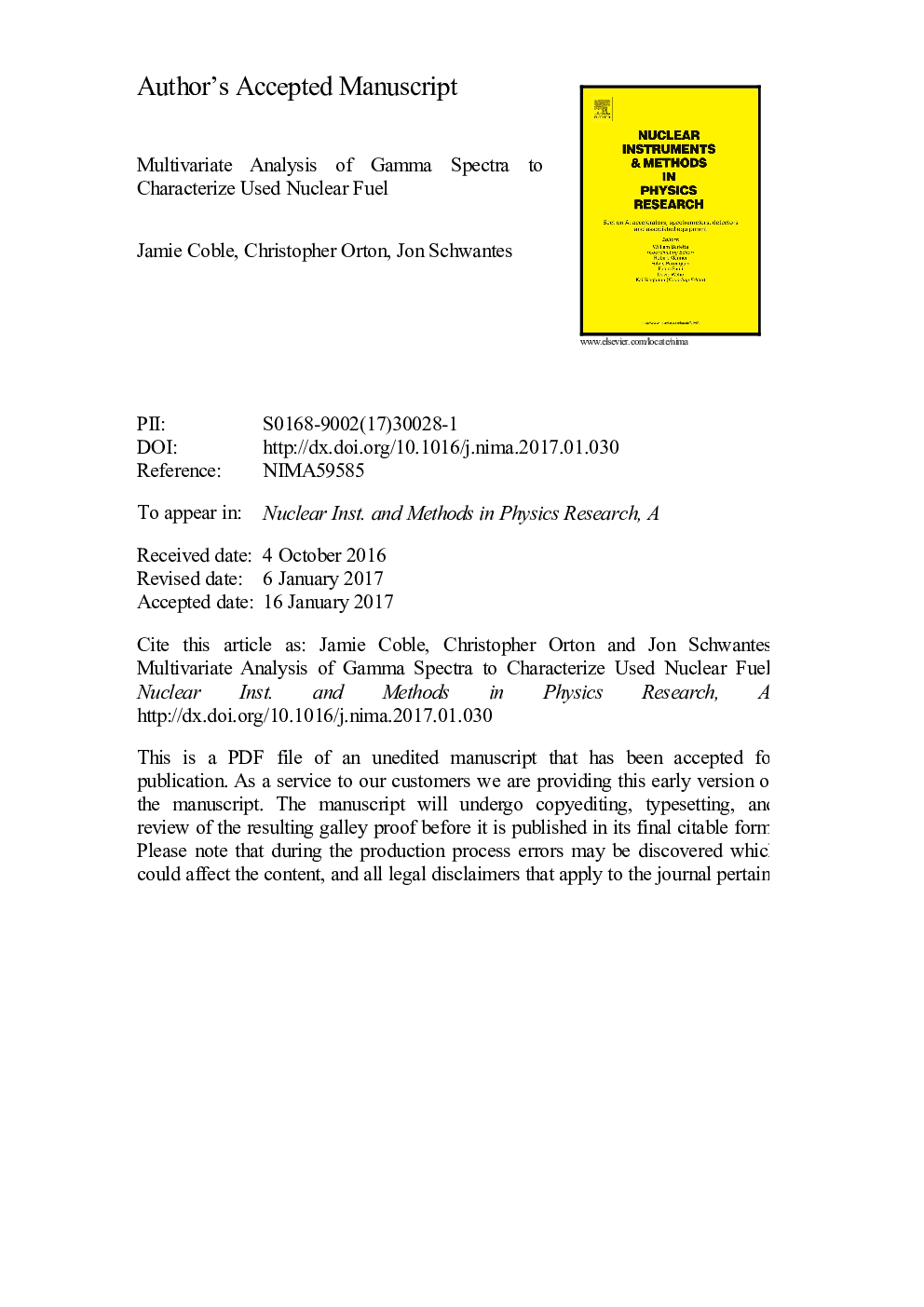| Article ID | Journal | Published Year | Pages | File Type |
|---|---|---|---|---|
| 5492792 | Nuclear Instruments and Methods in Physics Research Section A: Accelerators, Spectrometers, Detectors and Associated Equipment | 2017 | 24 Pages |
Abstract
The Multi-Isotope Process (MIP) Monitor provides an efficient means to monitor the process conditions in used nuclear fuel reprocessing facilities to support process verification and validation. The MIP Monitor applies multivariate analysis to gamma spectroscopy of key stages in the reprocessing stream in order to detect small changes in the gamma spectrum, which may indicate changes in process conditions. This research extends the MIP Monitor by characterizing a used fuel sample after initial dissolution according to the type of reactor of origin (pressurized or boiling water reactor; PWR and BWR, respectively), initial enrichment, burn up, and cooling time. Simulated gamma spectra were used to develop and test three fuel characterization algorithms. The classification and estimation models employed are based on the partial least squares regression (PLS) algorithm. A PLS discriminate analysis model was developed which perfectly classified reactor type for the three PWR and three BWR reactor designs studied. Locally weighted PLS models were fitted on-the-fly to estimate the remaining fuel characteristics. For the simulated gamma spectra considered, burn up was predicted with 0.1% root mean squared percent error (RMSPE) and both cooling time and initial enrichment with approximately 2% RMSPE. This approach to automated fuel characterization can be used to independently verify operator declarations of used fuel characteristics and to inform the MIP Monitor anomaly detection routines at later stages of the fuel reprocessing stream to improve sensitivity to changes in operational parameters that may indicate issues with operational control or malicious activities.
Related Topics
Physical Sciences and Engineering
Physics and Astronomy
Instrumentation
Authors
Jamie Coble, Christopher Orton, Jon Schwantes,
